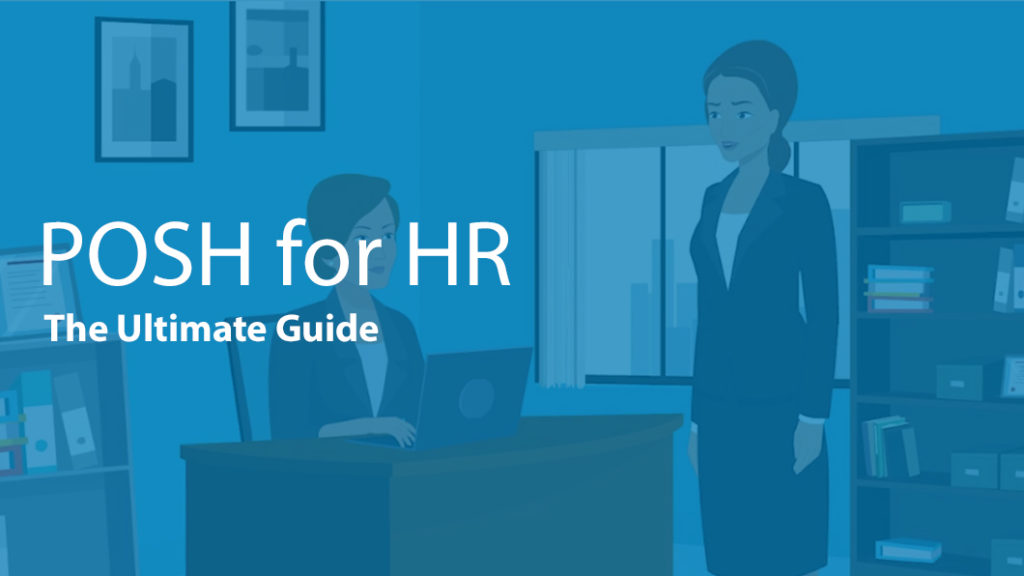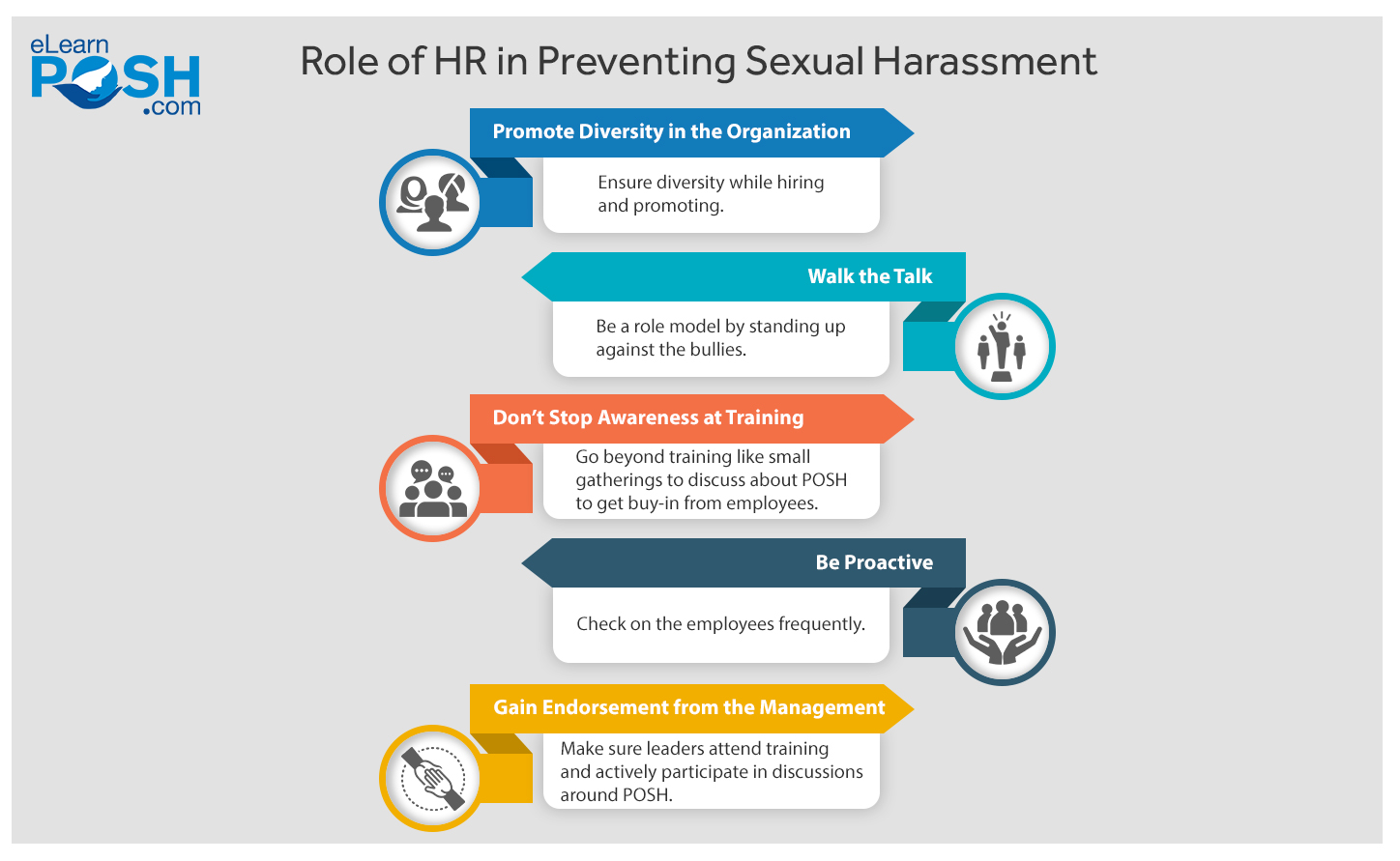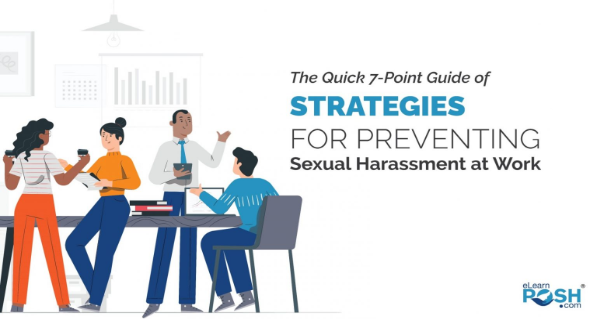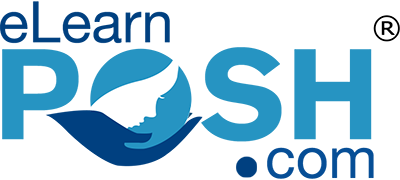
POSH Guide for HR
The human resource professionals in the organization are generally approached by employees with complaints like poor food quality in the cafeteria, the discomfort caused by company furniture or the perceived unfairness in leave policy.
Would the employees approach HR when they face sexual harassment?
Not always!
It is not necessarily the HR’s fault. The apprehension of the employees may be due to threat of the harasser, fear of termination or retaliation. Not just that, did you know in India the law that pertains to sexual harassment does not hold HR responsible for anything related to Prevention of Sexual Harassment?
This does not mean that the HR has no role in creating a harassment-free workplace. Human resource professionals are responsible for creating the organization’s culture and protecting it. They also have a huge hand in ensuring that employees have a positive experience in the workplace. Taking initiatives to prevent any form of harassment and employing ways to convey that harassment will not be tolerated at any cost are also part of creating a positive environment.
This blog will be a complete guide for human resource professionals who are motivated to create a harassment-free workplace.
We will begin with the basics.
Sexual Harassment of Women at Workplace, 2013
Sexual Harassment of Women at Workplace (Prevention, Prohibition and Redressal) Act, 2013 was enacted in 2013 by the Government of India. The Act is commonly called as the POSH Act and we will use the same in this blog.
What does the POSH Act say?
The POSH Act holds an employer responsible for preventing any form of sexual harassment at employees. It is the responsibility of the employer to handle any complaints regarding sexual harassment at workplace.
The POSH law lays down a few measures for organisations to stay compliant to the POSH Act which are mentioned below.
- The organization has to draft a policy on prevention of sexual harassment. The policy should mandatorily cover it’s stand about any incident of sexual harassment at workplace, the complaining process and the actions taken against the guilty.
- If the organization has more than 10 employees (including interns, employees working on contracts, temporary or ad hoc employees), it should constitute an Internal Committee (IC) which will handle complaints on sexual harassment.
- The organization should organize training or awareness programs for employees on the POSH law and their rights and responsibilities.
- Finally, the organization should file an annual report on the number of sexual harassment cases filed and submit it to the District Officer.
Know what a workplace is
POSH Act speaks about sexual harassment at workplace. To effectively drive POSH compliance, it is important for you to understand what a “workplace” is.
The POSH Act clearly defines workplace as “any place visited by the employee arising out of or during the course of employment, including transportation provided by the employer for the purpose of commuting to and from the place of employment”.
So, Workplace includes both the Primary Place of Employment & the Extended Workplace.
Extended Workplace may be
- Places visited by the Employee – like Client Location or Supplier Location
- Transportation provided by the employer – Like Office Cab or Bus
- Business Travel – Like conferences, Trainings or meetings
- Communication medium provided by the employer – like Office email, chat tools or phone
- Office sponsored entertainment – Like Team dinner, Outing or Annual Party
- Office provided accommodation or stay – Like hostel or hotel rooms.
With remote work and Work-from-home options evolving every day, the boundaries of workplace are also fading. This list can be considered as a general guideline.
Get answers and FREE consultations for all your POSH related queries. Click here Join our ‘Not-for-profit’ LinkedIn group.
Role of HR in Preventing Sexual Harassment
As an HR, you can employ several methods to create a safe workplace. Here are a few:
- Actively participate in policy drafting
- Display the organization’s policy in conspicuous places in the organization and intranet.
- Intimate the employees and other stakeholders about the policy and take undertaking from them.
- Ensure that the complaining process is easy.
- Ensure that employees know the details about the Internal Complaints Committee (ICC) members. The details are to be updated when required.
- Coordinate with the Internal Committee (IC) members to organize training for employees, managers and IC members. The training should be conducted at least twice a year.
- Coordinate with and support the IC in filing and submitting the Annual Report.
- Support the complainant in filing a complainant and pursuing the trials.
- Ensure that the rights of respondent/defendant are protected.
- Assist the complainant if she/he wishes to file a complaint under the Indian Penal Code.
The above mentioned are some steps to ensure that the organization stay POSH compliant. Apart from these, the HR has some moral obligations as well. Let’s have a look.
 Promote Diversity in the Organization
Promote Diversity in the Organization
Take it as a challenge to have a diverse workforce and accomplish it. This should not stop only at hiring employees from diverse backgrounds. It is also important to ensure that the organizations have leaders from diverse backgrounds too. Be sure that diversity does not limit to having an equal ratio of male and female. Have people from diverse ethnicity, race, language, religion, etc. is equally important. This will help employees appreciate diversity and help in creating a respectful workplace.
Act against any form of discrimination. If you get to know that a female employee is paid less because of her gender, speak to someone who can make a difference and turn the situation around.
Several organizations conduct training on promoting equality and diversity. If the employees see no action from the organization’s side to promote equality, the training will remain inside the training room. Mediate conversations about equality whenever it is required. Encourage employees to speak up about times when they felt discriminated in their life. Make it easy for the employees to embrace differences of each other.
This conveys that everybody is equally treated, and discrimination in any form will not be entertained.
Walk the Talk
Be a champion yourself. Be an example on what to do when witnessing any form of harassment. Tell a bully that it is not okay to tease or pass offensive comments. Do not laugh at an inappropriate joke made by a co-worker at another co-worker. Address it the right way.
Listen to an employee if she/he comes to you with a complaint on sexual harassment. Encourage them to file a complaint to the IC and assure them that of confidentiality.
It is important that you engage with employees more often. Get involved in the everyday work environment. This makes you more approachable to employees. You will also get to know what is happening in the work environment. You may witness incidents involving unintentional discrimination and harassment. Take time to address such issues privately without blowing it out of proportion.
Don’t Stop Awareness at Training
Training about the POSH law, what accounts to sexual harassment, what is acceptable and what is not, the consequences of being booked for sexual harassment, etc. are crucial for spreading awareness. It is also important that the training awareness programs should be done at least twice in a year. This helps in better knowledge retention. Make sure the content is specific to the industry and region your employees belong to. Remember, imparting knowledge alone is not enough to increase awareness. Employees should be able to empathize with the person subjected to harassment. This can make a difference.
Have small gatherings in office to discuss about how sexual harassment can be detrimental to a person. Give small homework to employees. You can ask the men in the room to go speak to women in their life about whether they have ever experienced sexual harassment and why it was not reported. This can be eye-opening to those who take it lightly.
Conduct awareness programs for POSH, like “harassment awareness” weeks and days. You can also share case studies on how sexual harassment was successfully handled. This will act as good reinforcement for the employees.
Be Proactive
It is not necessary that an incident must occur to draft a policy. Ensure that the policy drafted is free of loopholes, and that employees know whom to approach when an incident occurs. Make sure this is clearly communicated to the employees.
Make it a habit to check how the employees are doing. You can ask whether they know how to file complaint, or whether they have any complaints for the organization in one of your casual conversations. This not only empowers the victim to speak up, but also let the potential harasser know that the HR genuinely cares for the employees.
Gain Endorsement from the Management
When leaders of an organization make it clear that they have zero tolerance for harassment, it sends a very strong message to the employees and helps in fostering a respectful and harassment free workplace. You can get the leaders to attend training and make them actively participate in discussions around the topic of preventing sexual harassment.
Remember, as an HR we have only one goal and that is the welfare of the employees. Working in a toxic work environment where teasing, bullying, and sexually coloured comments are considered normal, will negatively impact the employee morale and in turn affect their work performance. You have a significant role to play in creating a work environment that is safe and respectful. Work towards that mission and you can brag about how your efforts are making a difference to your employees and the organization.



Leave a Reply